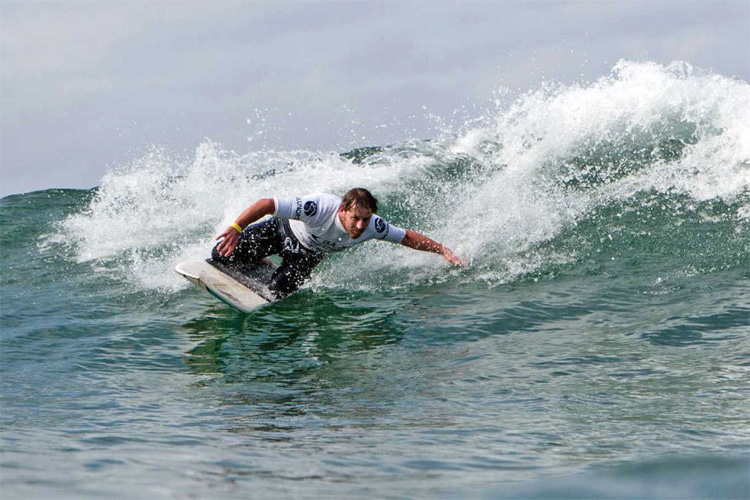Invented by Southern California surfers, kneeboarding is a crossover water sport that blends the thrill of wakeboarding and water skiing with the adrenaline rush of surfing.
Kneeboarding in the waves, also known as kneeboard surf or knee-riding, has always been an alternative form of stand-up surfing but, as time passed by, matured into a proper water sport.
Because they ride the wave closer to the water's surface, kneeboarders often say that the sensation of speed is greater than in surfing.
A kneeboard is highly maneuverable, but you've got to know how to position, distribute weight on the board, and adapt your upper body to wave transitions.
Kneeboarding is alive.
Although not as popular as in the 1960s and early 1970s, it is still an exciting way to navigate big, small, mushy, or hollow waves.
A standard kneeboard ranges between 5'6'' and 6'2'' and normally features twin-fin, thruster, quad, and five-fin setups, depending on the conditions, the board itself, and the rider's preference.
It is often wider and flatter than a surfboard and features a fish or diamond tail and a wide, round nose.
You should use swim fins to help you get into the wave and steer the board faster in the critical section of the ride.
Many kneeboarding enthusiasts opt for installing back and front-foot traction pads, but you can always use the traditional gripping method: wax.
Kneeboard Surfing 101
Now, let's get down in a kneeling position:
- Eye a four-foot wave;
- Start paddling for the wave using your arms and kicking with your feet;
- When you feel you got into the wave, push the board with your hands and pop up;
- Slightly bend your knees and look where you want to go;
- If needed, use your hands to accelerate;
- Get down the wave;
- Grab your outside rail with your hand;
- Keep your inside hand close to the water to maintain balance;
- Paddle with both hands or pump the board with both knees if you need more speed down the line;
- To execute turns, 360 spins, and off-the-lip maneuvers, make sure to lower your stance and use both hands to support the movements;
